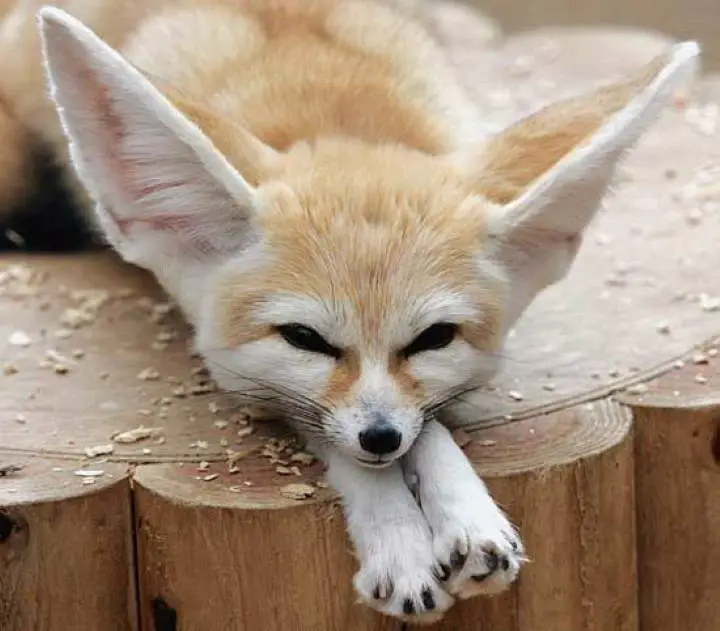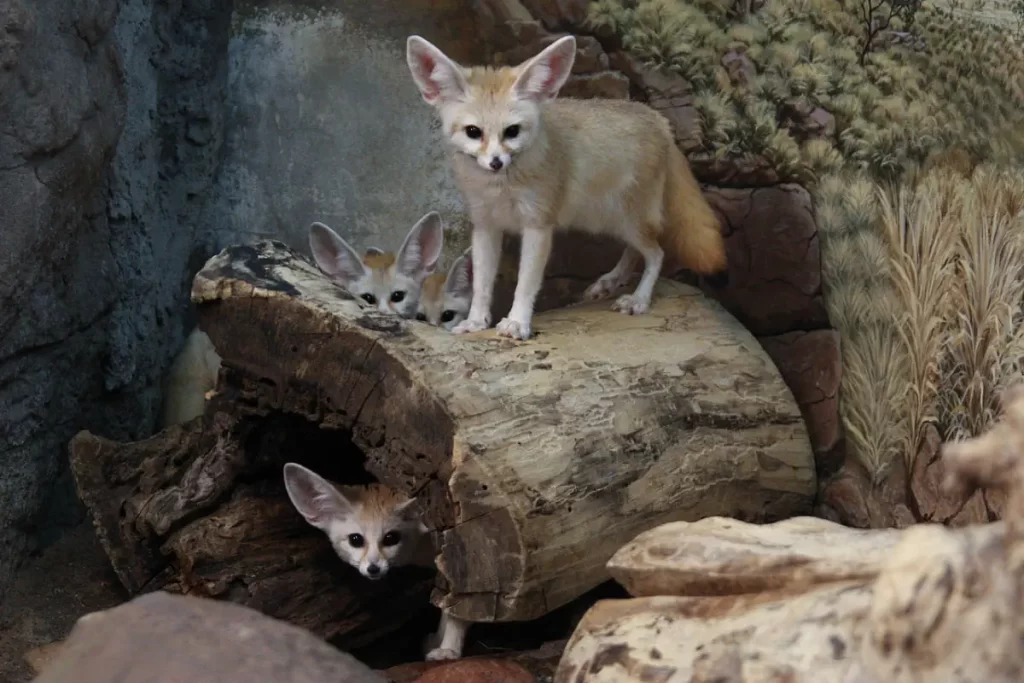Fennec fox (scientific name: Vulpes zerda), also known as Fennek fox, is the smallest member of the Canidae family. It is a fox species that has adapted very well to desert life and can be found in North Africa and the Arabian peninsula. Here are 10 amazing facts about Fennec Fox.
1. They are the smallest foxes in the world
The fennec is the smallest of the foxes with enormous ears, a tiny lovely face, and a pointed snout.
They are even smaller than an average house cat. They weigh about 0.7-1.6 kg (1.5-3.5 lb), with a body length of between 24-41 cm (9-16 in); it is around 20.3 cm (8 in) tall.
The tail has a black tip and is 18-31 cm (7-12 in) long.
2. Fennec Foxes have large ears
They have long ears (compared to their body length) which are four to six inches long (10-15 cm).
This allows the fox to live comfortably in the desert because they can keep their body temperature in balance through their ears/get rid of extra heat and keep them comfortable even in the hot desert temperatures.
3. They can tolerate long durations without water
The fennec fox is the only known carnivore that can live without water in the Sahara Desert.
Their kidneys are specially adapted to conserve water and can obtain moisture from the food that they eat.
This fox eats grasshoppers, locusts, and other insects, as well as small rodents, lizards, birds, and their eggs.
It also feeds on roots, fruits, and leaves, which help it stay hydrated.
4. They have furry feet
Fennec foxes have extra-thick fur on their feet, which keeps them warm at the cold desert nights and protects them from the sun during the day.
Also, this extra fur on their feet gives them excellent traction on loose sand.

5. Fennec foxes mate for life
The gestation period of fennec foxes lasts approximately 50 days, and at the end of this pregnancy, they give birth to 2-4 cubs.
After the cubs are born, males become very aggressive to protect their families and bravely defend their families against any danger.
The kits get sexually matured at 10 months old.
Parents and offspring can live together for years. They live in burrows dug in the sand or in small soil areas.
They are highly social animals
6. While other fox species mostly live alone, these foxes are very social
Fennec foxes live in groups of as many as 10 individuals, though their number is largely governed by the number of food resources available in an area.

7. They communicate using many different vocalizations
They communicate using a wide variety of sounds, including barks, growls, and squeaks.
They can even purr when they’re happy.
8. They can jump 3 times higher than themselves
While their legs may be tiny, but fennec foxes can run 32 kilometers (20 miles) per hour.
And they can jump 2 feet high and 4 feet forward when springing to catch prey or evade a predator.
9. They are nocturnal creatures
They enjoy the nighttime since they spend most of their afternoons in their underground burrows to keep cool and avoid the heat.
Also, their sensitive earbuds allow them to detect the movement of small prey underground. That’s why they hunt at night.
10. They do not have musk glands
The desert fox, unlike other foxes, does not have musk glands, it is also debatable whether the desert fox really belongs to the genus Vulpes because it has fewer chromosome pairs than other fox species.
While all other foxes have between 35 and 39 chromosomes, desert foxes have only 32 chromosomes.
A night hunter with big ears and an incredibly cute appearance is adapted to survive in the harsh desert conditions, he can hear even the lightest rustles, dig deep holes and jump 3 times higher than itself.
Some not so-amazing Fennec Fox Facts
The most important natural predator of the Fennec Fox is the eagle owl. People hunt it for its fur or trap it for the pet trade. But the most important threat comes from human settlement and commercialization of the Sahara Desert.
Many foxes are killed by vehicles, there is also habitat loss and degradation. It is strange that they are killed by humans because they pose no obvious threat to livestock.
So much so that these small predators keep the rodent and grasshopper populations under control. Rodent growth poses a threat to the environment and agricultural crops. Small carnivores such as the fennec fox are extremely important in keeping many ecosystems in balance.
Also, in North Africa, they are trapped and displayed or sold to tourists.
Fennec Fox as a pet
Fennec foxes may seem cute but these wild animals have not been domesticated.
Although it’s not common, sometimes these tiny foxes with oversized ears are kept as pets. Fennec foxes behave a bit like active, playful little dogs.
However, it’s important to remember these are still animals with wild instincts, even if they were bred in captivity.
- Sloth Facts: 10 Amazing things about these adorable mammals - August 12, 2022
- 10 Amazing Koala Facts - February 18, 2022
- 10 Amazing Humpback Whale Facts - December 22, 2021